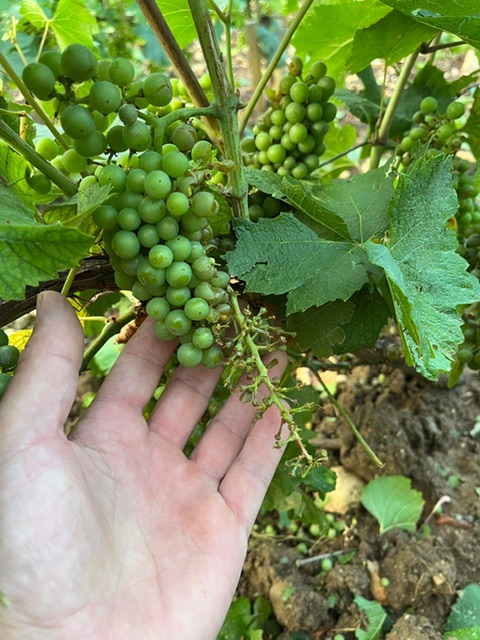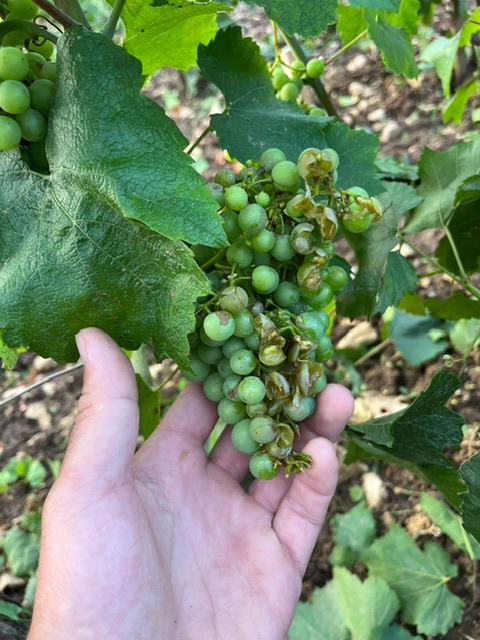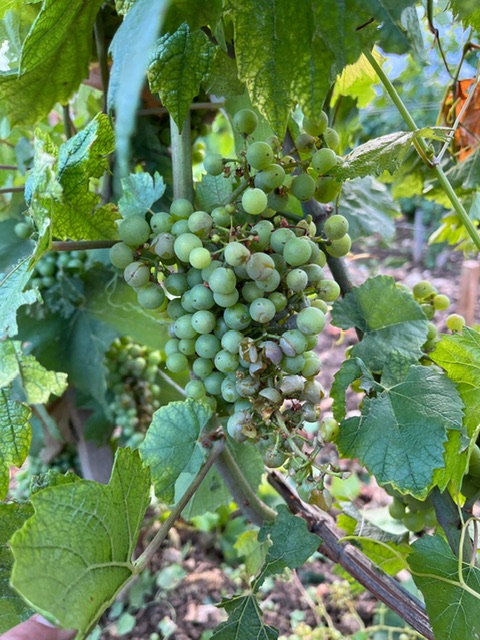It’s almost impossible to reasonably quantify the damage caused by the July 11 hailstorm. There are wide variations within the appellations; yes, even within the same section and rows of vineyards. Metre by metre the damage can vary enormously.
With this storm, most of the damage appears to be in the core of the Meursault village lieux-dits, where up to 40% of the grapes have been damaged. This is the worst hit area, although for Meursault as a whole the damage is less. Guesswork would put it at around 20%.
In many other areas, there is less, but still significant damage: from 5% to 10%. This is also serious, as it will change the sorting intensity during the harvest – or rather it should!



The hail-damaged grapes need to be handled correctly, otherwise they could affect the purity of the wine, and in the worst examples be a cause of “goût de grêle,” for me an ugly, bitter tone in the wines that at worst can render them almost undrinkable.
The yields looked very good until July 11, and losing 5% is not the end of the world. But hail-damaged grapes do change the tone of the harvest somewhat.
Aside from Meursault and other badly hit areas, this is not a question of yield – a lot of producers were already doing green harvest (removing excess fruit) or were thinking about it. It’s the hail-affected grapes still on the vines that could cause real trouble, not least because the broken grapes provide an entry point for rot.
Winegrowing is always a gamble. In this case, some who were early with their green harvesting perhaps now regret the decision.

 - A true vin d’émotion – a Burgundy of passion
- A true vin d’émotion – a Burgundy of passion - A truly hedonistic wine – lively and enjoyable
- A truly hedonistic wine – lively and enjoyable - A vivacious wine for pure indulgance
- A vivacious wine for pure indulgance - A potential vin d´émotion - frais et léger
- A potential vin d´émotion - frais et léger
Leave a Reply
You must be logged in to post a comment.